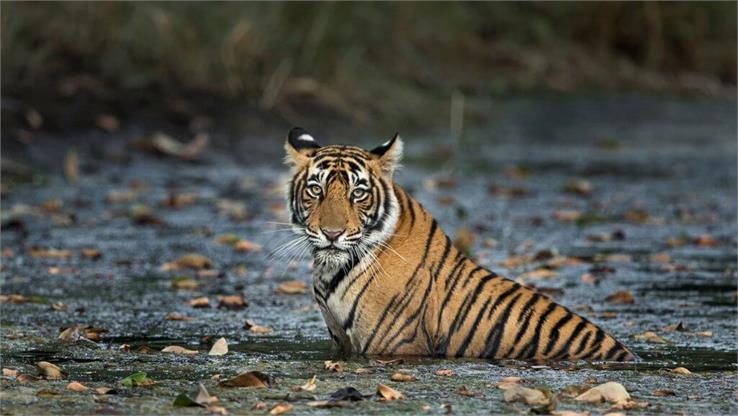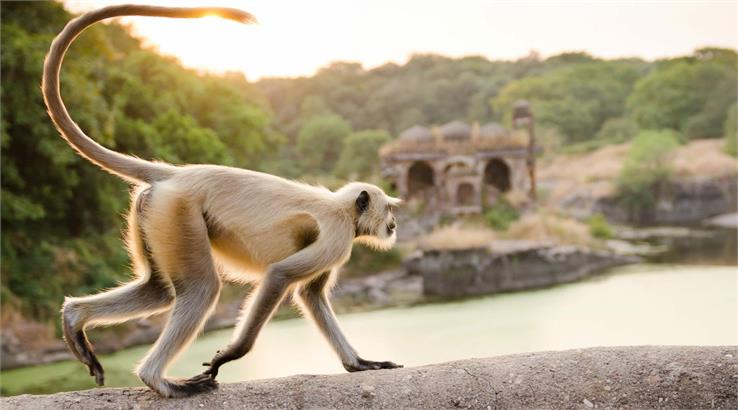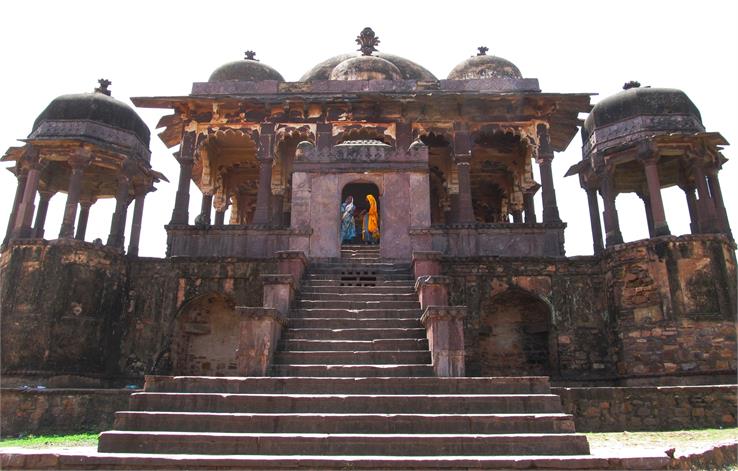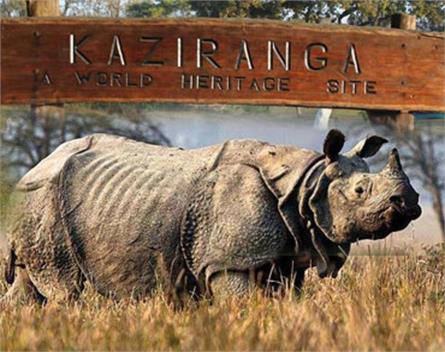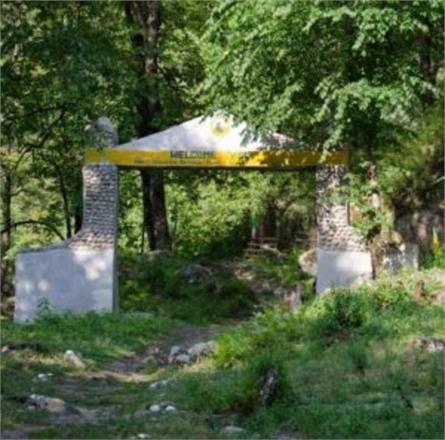Ranthambore National Park
Ranthambore National Park or Ranthambore is a perfect getaway for all the wildlife seekers and enthusiasts. Managed by the Government of India, it was set up as the Sawai Madhopur Game Sanctuary in 1955. The national park is situated in Sawai Madhopur district of southeastern Rajasthan, where the Aravali Range and plateau of the Vindhyas reunite. It has evolved as one of the largest and renowned parks in India, which was once a private game reserve of the Royal House of Jaipur.
Ranthambore National Park is primarily famous for its diurnal tigers; in fact, it was acknowledged as one of the Project Tiger reserves in the year 1973. There were 62 tigers in the park as per the 2014 census of tigers. Sprawling across the area of around 400 sq. km, it accommodates a large variety of flora and fauna, a great range of dry deciduous forests, a majestic fort called Ranthambore Fort, and several man-made lakes like Padam Talao, etc. Moreover, the authorities of the park provide the best accommodation and internal transportation services.

Apart from the tiger, we can get a view of the Indian leopard, sloth bear, wild boar, the blue bull antelope or nilgai, jackal, fox, striped hyena, langur, sambar deer, chital, jungle cats, Indian porcupines, common yellow bats, small Indian civet, and macaques, amongst others. Ranthambore is also the hub of a huge number of marsh crocs reptiles, including tortoises, Indian pythons, snub-nosed marsh crocodiles, Indian chameleons, etc. It also has a large population of birds with about 272 species due to its ample water bodies and diverse terrain. We can spot Woodpeckers, Gulls, Common Kingfishers, Wood Shrikes, Cuckoo-Shrikes, Parakeets, Greylag Goose, Flycatchers, Dove, Crakes, Gray Hornbills, Mynas, Cormorants, Nightjars, Orioles, Ibis, Pelicans, etc.
Draw your attention: Ranthambore Fort, Padam Talao, area of Jhalra, Rajbagh Talao, and Malik Talao are some just right spots to catch the perfect glimpse of the birds.
Further, it covers around 300 species of flora galore with Dhok as a majority of tree cover. Am (Mangifera indica), Khajur (Phoenix sylvestris), Banyan (Ficus benghalensis), Khair (Acacia catechu), Imli (Tamarindus indica), etc. are some of the tree covers found in the park. With a lot of different vegetation, the forests of Ranthambore contain Karel, Kakera, Neem, Khejda, and Mohua.
In addition, Ranthambore got its name from the historic Ranthambore Fort centered within the park. The fort is said to be the hunting grounds of the Maharajas of Jaipur at the time of the country's independence. The park represents a perfect amalgamation of history, nature, and wildlife. To experience thriving biodiversity in Rajasthan, this is the right place!
Entitlements
National Park: 1981
Project Tiger Reserve: 1973
Wildlife Sanctuary: 1957
Places to see around
Besides Ranthambore National Park, there are several other beautiful places to see around, which are worth visiting.

- Bakaula
- Lakarda and Anantpura
- Padam Talab
- Rajbagh Talao
- Kachida Valley
- Raj Bagh Ruins
- Ranthambore Fort
- Malik Talao
- Surwal Lake
- Jogi Mahal
Now, it’s time to explore!
Jungle Safari Adventure
Ranthambore national park provides Safari facilities to venture its magnificent and alluring beauty and give a chance to all the passionate photographers to click their best. The timings for the Safari ride varies from season to season. They allow visitors to go on a Safari adventure on two kinds of vehicles, Canter (20 seaters), and the other one is Jeep (six-seater).
Time-Table Ranthambhor National Park
|
S.No. |
Month |
Morning Trip |
Evening Trip |
|---|---|---|---|
|
1 |
1st October to 31st October |
6.30 AM-10.00 AM |
2.30 PM-6.00 PM |
|
2 |
1st November to 31st January |
7.00 AM-10.30 AM |
2.00 PM-5.30 PM |
|
3 |
1st February to 31st March |
6.30 AM-10.00 AM |
2.30 PM-6.00 PM |
|
4 |
1st April to 15th May |
6.00 AM-9.30 AM |
3.00 PM-6.30 PM |
|
5 |
15th May to 30th June |
6.00 AM-9.30 AM |
3.30 PM-7.00 PM |
Hot Air Ballooning

Take a hot air balloon ride, fly high like a bird, sour through the splendid sky, and get a wholly delightful experience when in Ranthambore. Yes, balloon rides are available during the mornings and evenings covering the dense forest cover, mountain ranges, deserted villages, palaces, forts, and whatnot. You can catch the bird-eye view of the park and other incredible and picturesque landscapes. These are regulated by India’s first wholly licensed and approved Hot Air Balloon Company, Sky Waltz with highly experienced pilots who follow international safety standards. It is almost a 3 hours ride with a group of 4-8 people depending upon the balloon’s size. The ticket cost ranges from ₹10,000-₹13,000 according to the season and availability. The best time to hop onto a balloon ride is from mid-September to March. So, clean your binoculars and get ready to delight your visual senses.
Birdwatching
If you are a bird lover and bird watching makes you feel content, then you belong to Ranthambore. We have already mentioned how vast it hosts a variety of bird species and plenty of sources for avian sustenance. The park is home to several lakes including, but not limited to Surwal Lake, Padam Talao where you can take a breathtaking glimpse of winged creatures. The best time to catch sight is early mornings and preferable seasons are monsoons and winters. Indeed, it is one of the rejuvenating activities to admire nature at its best, which you can experience here.
Explore Heritage Monuments
Walk around the vicinity of the wildlife sanctuary, and you will find several gems of Rajasthan, which represent the vibrant heritage from the olden times. Ranthambore Fort is one amongst them which marks the Chauhan Dynasty and accommodates beautiful Trinetra Ganesh Temple (a perfect combination of faith and nature). It was also cited as the UNESCO World Heritage Site in 2013. Other than this, Raj Bagh Ruins, which is located between the Rajbagh Talao and Padam Talao is the embodiment of real beauty. Situated beside the Padam Talao, Jogi Mahal is another applaud-worthy landmark that was built as a hunting lodge by the royal family of Jaipur. There is also the second-largest Banyan tree of India standing next to the Mahal.
Hiking
Get on your comfortable shoes and hike into the park area towards Ranthambore during the early hours of the morning. The path area offers mesmerizing wildlife sightings, which will make anyone awestruck. Spot monkeys, deer, and several species of birds like soaring eagles, peacocks, etc. while you walk. Stroll around and inside the fort to capture some lifelong enticing vistas.
Ranthambore School of Art

This is one of the artsy spots in the region and an interesting place for all the art lovers. It was set up to spread awareness about the Project Tiger. It is the hub of very talented artists and students who showcase their skills by making paintings of the Great Indian Tiger to promote wildlife conservation. The paintings made by teachers and students are displayed for sale as well. The school holds workshops and exhibitions in other schools, museums, and villages to create the awareness and importance of wildlife and tiger protection. They are putting major efforts that have been acknowledged by various NGOs, both nationally and internationally.
Where to stay?
There are a plethora of luxury hotels/resorts available in Ranthambore for all those who wish to spend an extravagant weekend here. Standard resorts are also available for those who are seeking a budgeted trip with excellent amenities. For a more thrilling and adventurous experience, one can go camping at Tiger Machan and enjoy the cold nights of the forests at the park. Tiger Machan is one of the resort services amidst the jungles of Ranthambore National Park’s reserve area.
Best Time to Visit Ranthambore National Park
We are very well aware of the fact that Rajasthan is one of the hottest places in the country during the summers. So, gear yourself well with enough sunblock, a hat, and dark-colored glasses, if you consider visiting in the summer months from March to May. Moreover, it is exactly the opposite during winters, you will have to wear extra layers of clothes to protect yourself from shivering mornings and nights, though daylight is pleasant to go around.
How to reach Ranthambore?
Visit the huge park anytime from 1st October to 30th June. Otherwise, the park is closed during the rest of the year. The months of the winter season from October to December are the best times to beat the heat of Rajasthan.
By Air: Jaipur International Airport is the nearest airport to Ranthambore, which serves regular flights from all the major cities of India and is approximately 150 km away. Further, one can take private taxis, cabs, or buses to reach the destination safely.
By Train: Sawai Madhopur Railway Station is the nearest railway station to Ranthambore. Private taxis, autos, buses are easily available at regular intervals of time.
By Road: Ranthambore has well connectivity of roads from all the major towns and cities. You can reach here through state bus service, private buses, and cabs.
So, when are you planning your next trip to Ranthambore?


